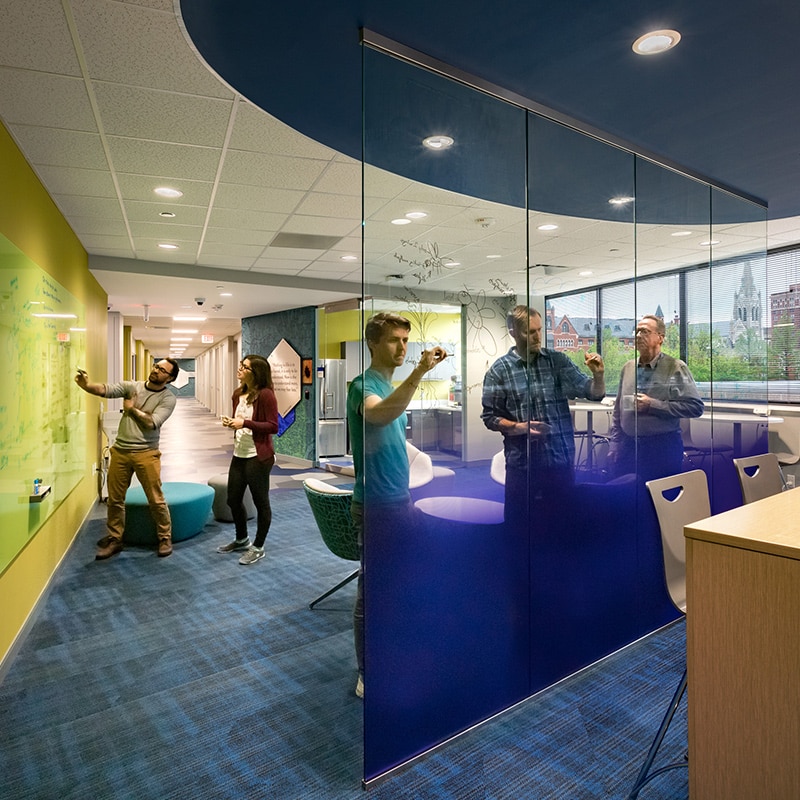Can a Building Really Increase Student Retention & Satisfaction?

Tuesday, September 8, 2020
Now more than ever, colleges and universities are seeking opportunities to increase student retention and satisfaction in their academic programs. Institutions across the United States take great pride in their students, offering quality education and co-curriculars that enrich them until they proudly receive their diplomas. However, we’ve identified a national trend indicating widespread delay in the completion degree programs among post-secondary students. In April 2020, the National Center for Education Statistics published its preliminary findings of an ongoing longitudinal study examining Credits Earned and Time to Degree Completion for students beginning college in the 2011-12 year. The results are eye-opening. By June 2017 – nearly 6 years later – only 63% of students seeking a bachelor’s degree had attained completion. At Hastings+Chivetta, we have studied this issue for many of our clients across the nation, collaborating with institutional leadership on how to best support students to complete their degrees and feel satisfied through the process. Our solution lies in forward-thinking programming and building design.
One of our recent clients, Saint Louis University, is known for caring for the entire person – mind, body, and spirit – through its teaching, research, health care, and service to the community. When the President of Saint Louis University (SLU) commissioned us to design a new STEM building serving all undergraduate students, he asked us to consider ways the building could minimize the Drop/Fail/Withdrawal rate and improve on-time graduation. One of the greatest barriers to on-time graduation in STEM and the Health Sciences are laboratory course sequences that vary from fall to spring. At an institution the size of SLU, the large number of Chemistry and Biology sections given each semester drive an assembly-line process that is difficult to reverse. But all that is about to change this semester as SLU recently opened its new Interdisciplinary Science and Engineering Building (ISE) at the start of this academic term. To keep the project on budget, the number of required teaching labs for current and projected future enrollment was carefully calculated with space utilization models. These models also considered Post-Baccelaureate programs and the demand for off-sequence instruction and in-lab tutoring. Based on the analysis, the new ISE Building incorporates two smaller Off-Sequence Teaching Labs, one for Chemistry and one for Biology. These labs accommodate different experiments and setups so that students who dropped, failed, or withdrew from a course in a previous semester can now retake the challenging class right away instead of waiting until the next academic year, thereby delaying their time to degree completion. Implementing this concept of proactive instruction is not just limited to STEM disciplines. All programs feature courses that build upon the knowledge gained from previous terms, therefore, proper programming and space utilization can be a valuable tool in creating environments that best support student success.
With a national perspective on higher education design, the experts at Hastings+Chivetta can effectively incorporate such flexible options into both new and renovated facilities. With careful planning, in-depth space utilization, space planning, and goal-setting is achievable for an institution of any size or budget. By optimizing the use of an institution’s instructional and physical resources, architects and academic leaders alike can develop environments that help students graduate in a timely manner, thereby increasing their satisfaction and motivation in their chosen degree program.
Contact Erik Kocher at [email protected] or (314) 529-4004 to talk about how our team can help your students be successful through thoughtful building design.